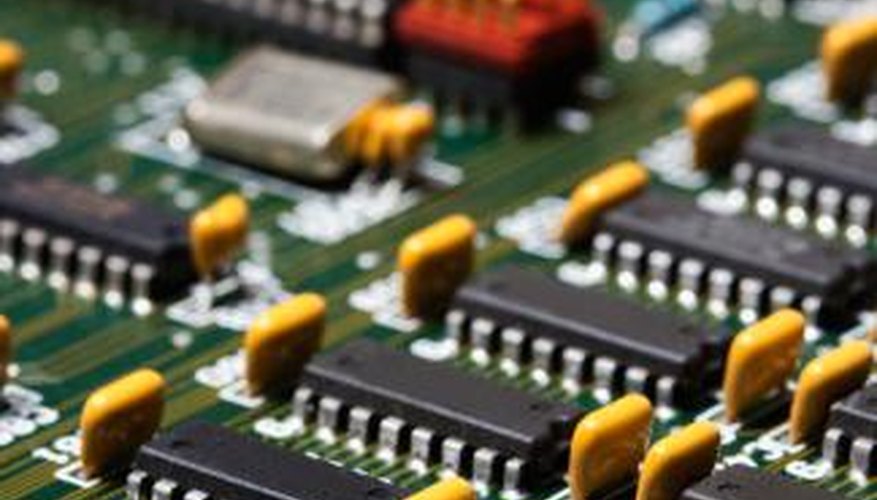An AC coupling capacitor connects the output of one circuit to the input of another. It is used to block the DC component of an AC waveform so that the driven circuit remains correctly biased. Any value of AC coupling capacitance will block the DC component. But because the AC coupling capacitance and the input impedance of the circuit it drives forms a high pass filter, the AC coupling capacitance must be calculated so that important electronic signal information won't be lost.
Measure, calculate or determine from a manufacturer's data sheet the input impedance of the circuit to which the coupling capacitor is connected. Multiply this number by 1/10 to find the minimum value of the coupling capacitor's impedance.
- An AC coupling capacitor connects the output of one circuit to the input of another.
- Multiply this number by 1/10 to find the minimum value of the coupling capacitor's impedance.
Determine the cut-off frequency you want for the high pass filter that is formed with the coupling capacitor and the input impedance of the circuit it drives. This value will depend on the specific application. For circuits that must pass very low frequencies, such as audio circuits, the high pass filter should be set to have a cut-off frequency (the lowest frequency that the high pass filter will pass without severe attenuation) between 2 and 20 Hz, depending on the level of low frequency audio quality you want.
Substitute the coupling capacitance's impedance into the Xc term in the impedance equation for a capacitor:
C=1/2_3.14_f *Xc
where
Xc is the impedance of the capacitor
C is the minimum value of the coupling capacitor
f is the minimum frequency of the waveform that will be applied to the input of the coupling capacitor.
Use a coupling capacitor calculator, see V-cap.com (Resources below) to analyse the frequency response of the high pass filter formed with your coupling capacitor and input impedance of the circuit it drives. Adjust the coupling capacitor value level and the input impedance level to obtain the optimum high pass filter frequency response for your application. Alter the value of the capacitor and input impedance so that you can analyse the effect on the high pass filter frequency response as a result of component manufacturing tolerance variations from the coupling capacitor and input impedance.
- Substitute the coupling capacitance's impedance into the Xc term in the impedance equation for a capacitor: C=1/2_3.14_f *Xc where Xc is the impedance of the capacitor C is the minimum value of the coupling capacitor f is the minimum frequency of the waveform that will be applied to the input of the coupling capacitor.
- Alter the value of the capacitor and input impedance so that you can analyse the effect on the high pass filter frequency response as a result of component manufacturing tolerance variations from the coupling capacitor and input impedance.
Use a electronic design automation software package to analyse the circuit with the value of the decoupling capacitor you selected and the circuit that connects to the coupling capacitor and the circuit to which the coupling capacitor connects. Perform a frequency response and a transient (time domain) response analysis with the software for the frequencies at which your circuit will be operated and for the expected input waveforms that will be applied to your circuit. Adjust the value of the coupling capacitor as necessary for an optimum frequency domain and time domain response for your specific application.
TIP
The calculations used are to quickly estimate an optimum value for a AC coupling capacitor for a general application. The exact optimum value for a coupling capacitor depends on a comprehensive analysis of the input and output circuits that the coupling capacitor connects. This is most often accomplished with EDA software (circuit analysis software).
WARNING
Circuit analysis with Electronic Design Automation (EDA) software is often necessary for circuits that are designed for commercial products. The model complexity of electronic components often requires using EDA software to ensure that the response of the circuit is completely characterised and that reliability problems don't result.
